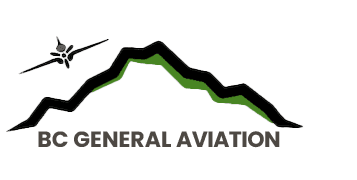The airlines are moving to a different type of training and checking, wherein it is not so rigidly scripted. Before this, the crews would know just from the weather, the weight and the departure what was going to happen.
Now, there is a list of events that we checkers/ instructors can choose from and we also can choose when they happen during the four-hour session.
This allows us to observe the initial reactions of the crew members and watch as they flop around for varying lengths of time before getting sorted out.
Having witnessed this and thought about it and done some research, I now brief as follows:
There are four distinct steps that our brains must go through before we can begin to properly react to an unexpected event and there’s no escaping them, there’s only the chance that we might not get through all four of them, like we see when teaching engine failures in a light twin.
-the startle or surprise factor- Bang!
-the next feeling that we experience depends on the type of person we are. If we’re introverted, we will be in denial( I didn’t hear that). If we’re extroverted, we will be quick to anger(Damn it!)
-the next step is acceptance( Yes, I did hear that)
-the final step is reacting and from then flows our first actual effect upon the event.
If we don’t make it through the four steps, we won’t be effective thereafter.
Once we emerge from that momentary paralysis, I counsel the following steps:
-protect yourself( oxygen mask, smoke hood?)
-protect your energy( speed and thrust)
-protect your flight path( terrain)
-prioritize ( what needs attention
Immediately and what can be deferred? Do we need to get on the ground immediately and forget about fuel dumping and briefings and ATC speed limits and gear and flap speeds and decision heights and checklists?)
-manage your workload( is the autopilot/ auto thrust available? Should it be used now or is it better to hand fly?)
From here, the list can become quite long indeed but the crews seem to respond better, knowing in advance that those first four steps are perfectly normal and things flow better and there is less-likelihood of further surprises or distractions when executing the follow-on steps.
Which brings my contribution to the last point: managing threats and errors, something we all actively are doing anytime we’re around airplanes.
Threats are not something that we caused but affects our flight.
Errors are our own doing and come in a surprising number of ways and this short list is not exclusive:
-not doing something
-doing the wrong thing
-doing the right thing at the wrong time
The most-common threat or error initiator beginning a chain that leads to an incident/accident is a distraction and this is what I use in the simulator. A simple no-reply on a new freq or having Departure ask them to confirm their squawk or try another transponder will frequently result in both pilots looking down and back at the rear of the centre pedestal, where the controls for the transponder are. If they both do, they have created a perfect “learning moment” and thus no one notices the decaying airspeed as they enter a wind shear or the decreasing radio altimeter as an impending GPWS event unfolds or that one of the traffic symbols displayed on the navigation display has turned towards them.
Before I was giving the above briefings, we would occasionally stall, crash or collide, respectively, due to delayed and slow reactions to the surprise.
Since including the briefing, it hasn’t happened in years, no matter how I vary the setup.
Therefore, to manage distractions requires a few steps:
-recognizing it as a distraction
-is it a threat? Not all distractions are a threat, it depends on when they happen. So we need to ask, “What did I miss? What should I have done while distracted with that?”
And the crews learn their lessons fast; when we fly approximately the same profile the next time but with a different event at a different point, one pilot will recognize the distraction as a threat and not allow their focus to be drawn away from higher-priority tasks at hand.
That last observation means that a very real-but subtle, almost subliminal-change in the skill set of the crew has occurred and it gives me great satisfaction to know that they emerge four hours later better than when they went in. Tired and maybe a little damp in spots but better for it. That is what keeps me coming back, to rock and roll in the dark in the back of the sim, day after day, while my peers are out golfing in the Sunshine. Paying it back to those who trained me, paying it forward to the next generation, one crew at a time.

